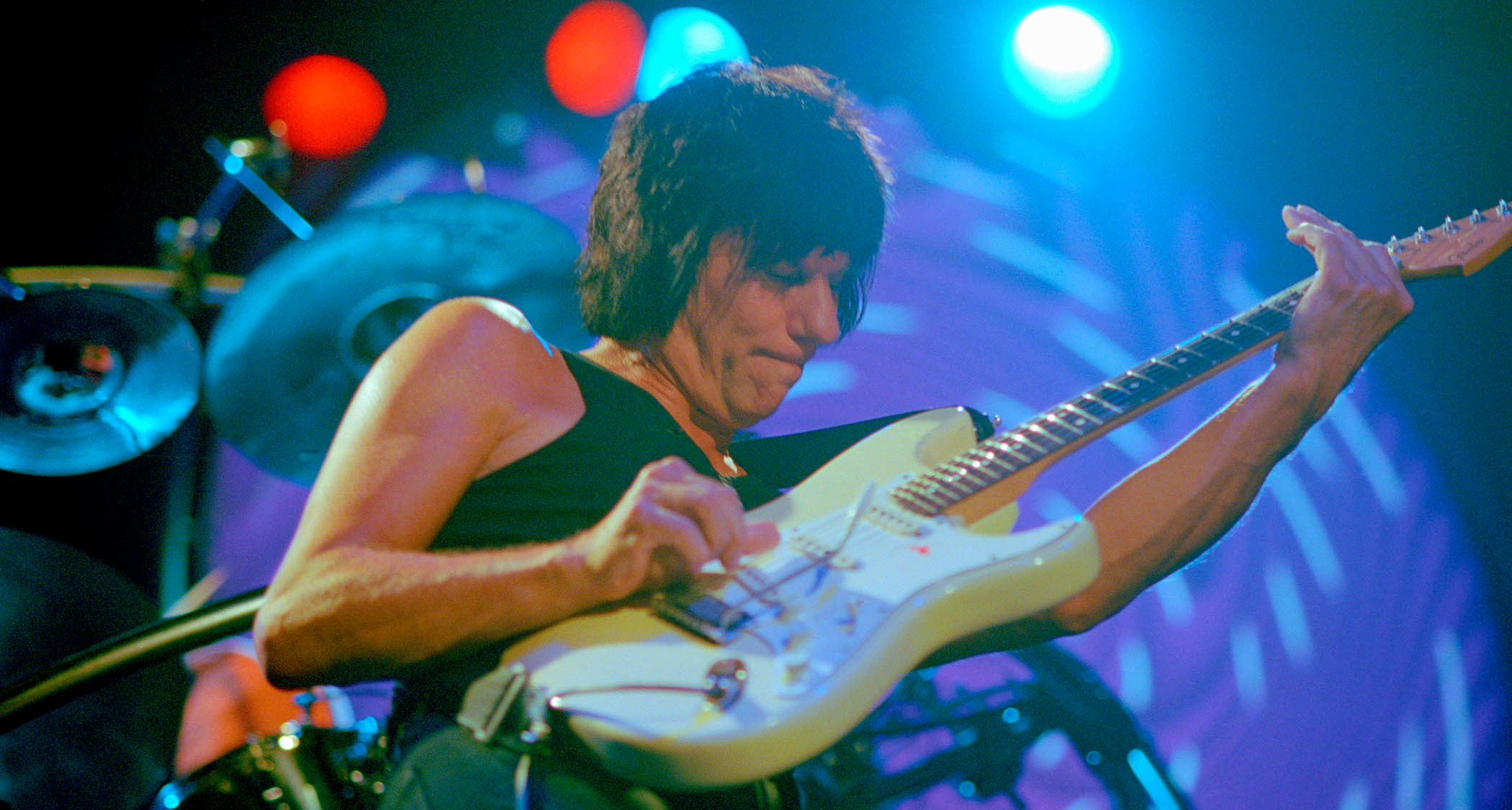
Jeff Beck remains one of the most influential electric guitarists in the history of the instrument. His ever-evolving style has captivated listeners with incredible sonic effects, beautiful phrasing and dramatic solo statements.
Unusually for one of the British blues-rock guitar heroes, many of Jeff’s tunes featured advanced chords and harmonies, and his music attracted world-class jazz musicians including Jan Hammer, Vinnie Colaiuta and Jason Rebello. While not being a trained jazz player, Jeff had an amazing knack for negotiating these complicated structures in a superbly natural style.
There is a huge difference in approach between Jeff’s early playing and that shown later in his career. He started off playing fixed bridge guitars but the change to using a Fender Stratocaster with a whammy bar heralded a reinvention of his approach.
Stevie Wonder wrote the classic song Superstition for Beck but was prevented from giving it to him by his record company. Stevie went on to write Cause We’ve Ended As Lovers for Jeff, which became a signature song (and is the most cited ‘favourite instrumental’ in GT’s monthly Q&A). The song was a gift to Jeff for playing on Stevie’s classic album Talking Book, and actually features a Telecaster rather than the Les Paul featured on Blow By Blow’s cover.
Coming from the ‘Surrey Delta’ which spawned such British guitar elite as Jimmy Page and Eric Clapton, it’s no surprise that Jeff was a deeply rooted blues musician. But he was also heavily influenced by guitarists such as Cliff Gallup and Les Paul, and you can hear these elements in his playing.
It never sounds like he’s showing off, it was all about making a beautiful contribution to the song
In addition to these influences, he experimented with many different kinds of grooves from soul and R&B to modern dance styles and even some arrangements of classical music (check out his stunning version of Puccini’s Nessun Dorma at Eric Clapton’s Crossroads Festival).
The way in which Beck made his solos service the broader musical message was impressive; it never sounds like he’s showing off, it was all about making a beautiful contribution to the song. In the examples I’ll show you some of his arsenal of techniques.
The short pieces here often utilise the vibrato arm, so apologies to those of you that don’t have a guitar with this appendage. However, you could learn a lot by trying to adapt these ideas by replacing the whammy bar scoops, doops and bends with regular bends and prebends. This can sound new and exciting, a bit like slide or pedal steel, but of course those with a vibrato-equipped axe will especially have great fun this month, too.
Get the tone
Amp Settings: Gain 9, Bass 7, Middle 4, Treble 7, Reverb 5
Jeff manipulated his guitar’s volume pot to get a clean tone out of a driven amp. He used an overdrive pedal and ran his amps hot to achieve the sustain that he needed. Jeff didn’t use a pick, which provided a fatter sound and probably aided his mastery of the Strat’s controls. Use your bridge pickup, set your gain (or pedal) high, and add some lush reverb.
Example 1
We begin our examples with a combination of legato articulation and faux slide playing. At the end of the first beat of bar 2, let the two notes ring together with a little waggle of the bar to approximate slide guitar vibrato, or if you have a fixed bridge add some wobble using your fingers.
Example 2
Again we’re going for a faux slide sound. In bar 2’s triplets, let the bar back up to pitch as you pull-off to the 5th fret.
Example 3
Here’s a classic JB idea of hitting a harmonic and using the bar to play a melodic line. This takes a degree of practice, so try fretting the destination notes before attempting to play the line with the bar.
Example 4
Here we’re using the bar to play melodically by mixing Mixolydian and Blues scale sounds (R-2-3-4-b5-5-6-b7).
Example 5
Here’s a workout with the whammy bar - sorry fixed bridge players! Note the use of the chromatic notes, notably the b5 and bluesy b3rd.
Example 6
In this solo you’ll find some faux slide ideas and a few of Jeff’s other tricks like his famous flutter – flick the bar upwards after hitting the note to create this ‘gargle’ effect. With this much gain and this many technical effects it’s important to mute unwanted string noise using the available flesh of both your hands. Enjoy!







